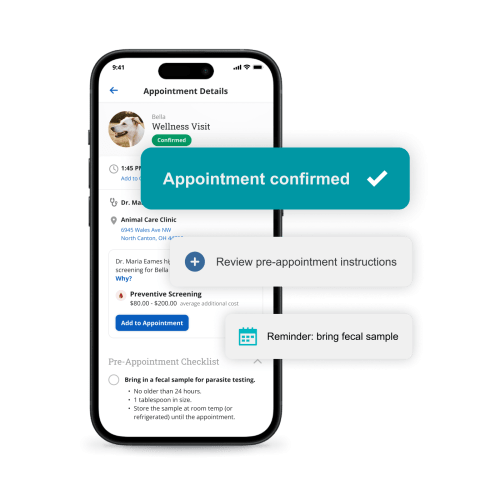Is Your Veterinary Practice Management Software Holding You Back? 7 Signs It’s Time to Upgrade

Running a successful veterinary clinic isn’t only about providing quality veterinary care—it also means optimizing day-to-day workflows for your veterinary team and providing an exceptional pet owner experience. Outdated practice management software can slow you down and hinder business growth, preventing the hospital and team from achieving their true potential.
You might think your current system is fine or that switching isn’t worth the hassle and expense. However, modern, cloud-based veterinary practice management software has advanced rapidly in recent years and offers features not previously possible using server-based systems. If your software is causing frustration rather than helping you solve problems, it’s time to consider an upgrade. Here are some common signs that your software is outdated—and how upgrading can help.
1. Your team is constantly fighting with laggy software
Slow or difficult-to-navigate practice management systems force team members to click through time-consuming menus instead of providing patient care. An outdated PIMS means everything takes longer, adding up to long delays in appointment scheduling, check-ins, patient record maintenance, and more. New cloud-based systems are significantly faster and more efficient, so they work with, instead of against, your employees.
2. Client communication is inconsistent
Poor pet owner compliance, frequent no-shows, and confusion about payment or pricing are signs of inconsistent or missing client communication. A new system can send automated notifications, appointment reminders, educational materials, and personalized messages to keep clients informed without adding extra work for your team. Staying in close contact with clients keeps them engaged in their pets’ care and bonds them more deeply to the practice.
3. You have too many open invoices and unpaid accounts
Chasing unpaid invoices and sending clients to collections is a veterinary practice owner’s worst nightmare. If your payment processor isn’t built into your current software, the multi-step checkout process likely causes bottlenecks at check-out. In addition, unpaid or incorrect invoicing can lower profitability. Newer systems integrate payment processing, including insurance and third-party financing companies, so it’s all on a single screen. And if someone leaves without paying, you can send an invoice and request online payment in seconds.
4. Inventory always seems to be wrong
Running out of critical medications and supplies is a headache for everyone, and ordering and stocking too much is a waste. Poor inventory management might be due to outdated software that doesn’t provide the solutions your practice needs. Cloud-based software solutions track stock levels, create order lists, and automatically alert your veterinary team when supplies are low. A new system can also help avoid missed charges that contribute to the inventory struggle.
5. Medical records are missing or filled with errors
Record-keeping and many other daily processes can feel clunky in a legacy system. Veterinarians strapped for time and struggling with the system can’t always finish their charts. This task often falls to the bottom of the to-do list, especially if the veterinarian has a packed schedule. A more straightforward system can help eliminate tedious tasks and streamline record-keeping with intuitive SOAP templates and shortcuts that help clean up your patient charts.
6. The schedule is a mess
If double bookings or miscategorized appointments plague the schedule, you would likely benefit from a system that offers online booking. You can set the rules for appointment blocking, length, spacing, etc, and allow the system to do the rest. Client service team members won’t spend nearly as much time on the phone, and you’ll see fewer errors in the schedule. Many new software providers also offer telemedicine integrations, opening your schedule to a new world of convenience and possibilities.
7. Your team is burned out
When everything takes longer and seems more complicated than it should be, the veterinary professionals on your team feel that stress. Routine daily struggles, missed lunches, and overtime can add up to burnout. The right veterinary practice management software can offload tasks and make clinic life easier, promoting overall wellness.
Transitioning to a new veterinary software system can feel intimidating. However, finding and implementing the right system can give your practice the boost it needs to find success. Cloud-based systems offer superior functionality to improve profitability, animal health, and the customer experience. With a bit of work now, you can enjoy the benefits of new PIMS software for years to come.
Want more content like this?
Sign up for The Connected Practice Newsletter




